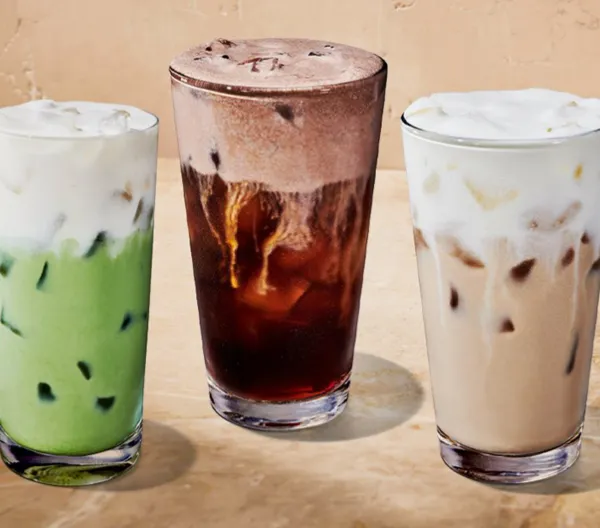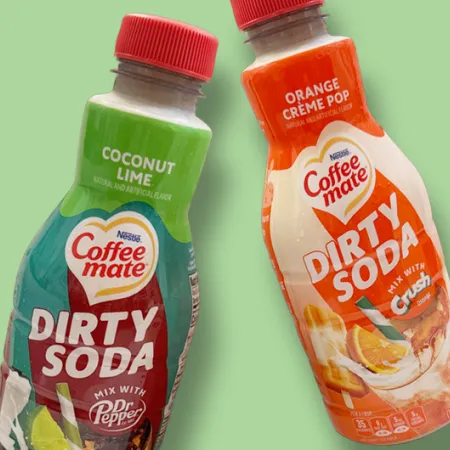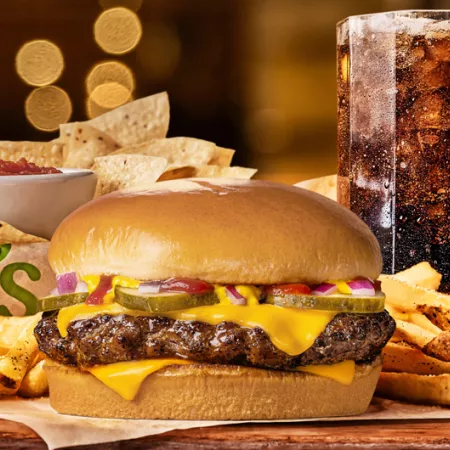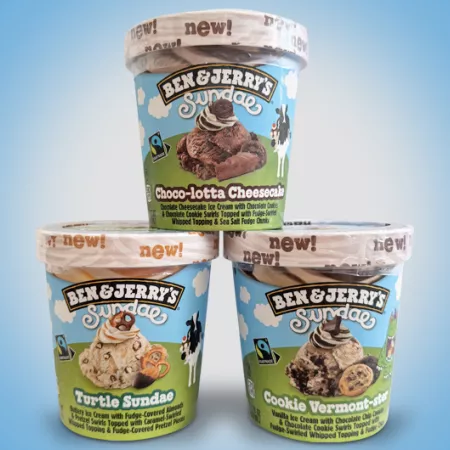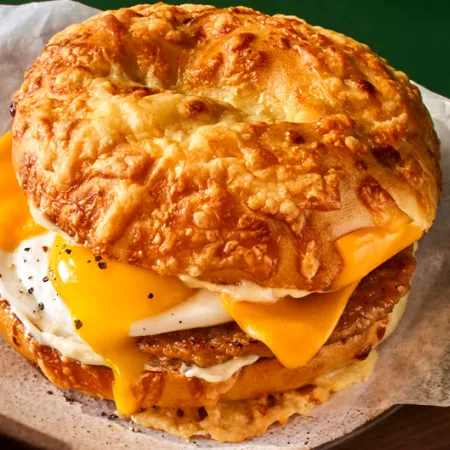These IHOP pancakes pack 24 teaspoons of sugar
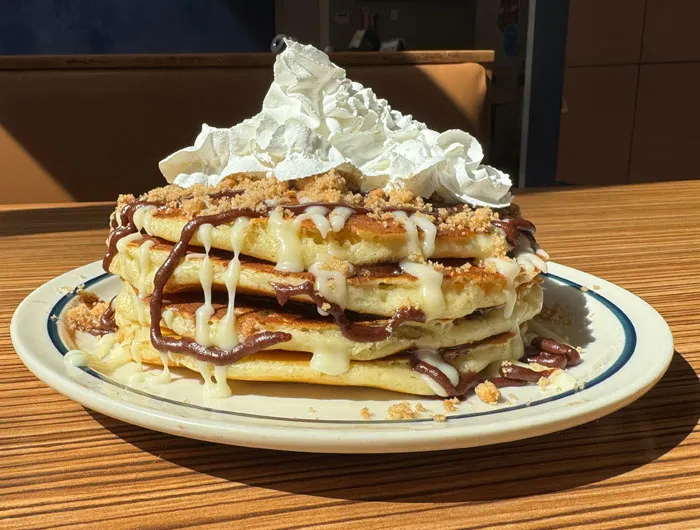
Marlena Koch – CSPI.
“Breakfast classics, combined,” says the webpage for IHOP’s new Coffee Cake Pancakes. “Classic coffee cake meets fluffy buttermilk pancakes in the biggest collab since eggs met bacon.”
“Biggest” is right. The limited-time “Spotlight Stack,” which was released in September, has more sugar and calories than any other full stack of pancakes on IHOP’s menu. Here’s why the Coffee Cake Pancakes are a lot closer to cake than to pancakes…and how the chain’s other options compare.
This article comes from Nutrition Action. We don’t accept any paid advertising or corporate or government donations. Any products we recommend have been vetted by our staff and are not advertisements by the manufacturers. They’re just healthier foods we think you’d like to know about!
What’s in IHOP Coffee Cake Pancakes?
According to IHOP, a stack of Coffee Cake Pancakes comes with “4 buttermilk pancakes filled with cinnamon streusel and layered with cinnamon spread then topped with cream cheese icing, more streusel & whipped topping.”
All told, that’s worse than starting your day with five Dunkin’ glazed donuts. IHOP’s dessert-for-breakfast concoction has:
- 1,310 calories
- 102 grams of total sugar (24 teaspoons)
- 23 grams of saturated fat (a full day’s worth)
IHOP’s website doesn’t disclose exactly how much of the total sugar occurs naturally in the pancake’s ingredients (like milk or buttermilk) versus how much is added (in the form of sugar, brown sugar, corn syrup, etc.).
But based on the pancakes’ ingredient list, we estimate that most of the 102 grams of sugar is added. And it takes just 50 grams of added sugar to hit the recommended daily maximum for adults. Sheesh!
Why doesn’t IHOP disclose exactly how much added sugar is in its Coffee Cake Pancakes?
Thanks to a national menu-labeling law, IHOP and other chain restaurants have to post calories and disclose how much saturated fat, sodium, total sugar, and other nutrients are in their menu items. But the law doesn’t require them to disclose added sugars. We’re urging the Food and Drug Administration to close that loophole.
And if you think that any menu item with more than a full day’s worth of added sugar should flash a clear warning, we agree. So does New York City. On October 4, the Sweet Truth Act went into effect there, making New York the first city in the nation to require added-sugar warnings on chain restaurant menus.
But consumers shouldn’t lose this protection when they leave the city. We need the same added-sugar warning across New York State...and across the country.
That’s why we’re pushing for three bills in the New York State legislature: one requiring added-sugar warnings on menus, one requiring sodium warnings, and one requiring warnings on high-sugar beverages. If passed into law, the three would ensure that New Yorkers have consistent, easy-to-understand nutrition information whether they’re ordering food or drinks.
In Massachusetts, the Healthy Kids, Healthy Futures Act would bring similar protections by requiring added-sugar menu labeling, improving kids’ meal standards, and limiting unhealthy food marketing in schools.
Learn more: New York state nutrient warning label campaigns
Ingredients to watch in the IHOP Coffee Cake Pancakes
How do just four pancakes with toppings rack up as many calories as three McDonald’s Double Cheeseburgers? The IHOP website’s nutrition calculator breaks down the numbers by ingredient. Spoiler: The white-flour buttermilk pancakes contribute less than half the total calories (520). The rest come from the streusel topping (420 calories), cinnamon spread (240), cream cheese icing (100), and whipped topping (25).
And those toppings’ calories come from mostly unhealthy fats plus (more) refined carbs. Just take a look at the top ingredients in the streusel (white flour, sugar, palm oil), the cinnamon spread (sugar, palm-oil margarine), the icing (sugar, water, cream cheese), and the whipped topping (water, hydrogenated palm kernel oil, sugar).
But the list of unhealthy ingredients doesn’t stop there. The dish also contains Yellow 5 food dye and the preservative TBHQ—two food additives that we rate as “avoid” in our Chemical Cuisine guide because of their cancer risk. Yellow 5 can also trigger hyperactivity in some children and can cause allergy-like reactions in people who are sensitive to it.
How do the Coffee Cake Pancakes compare to IHOP’s other pancakes?
No other pancakes currently on IHOP’s menu have as many calories and as much sugar as the Coffee Cake Pancakes. But a few other full stacks come close.
The Oreo Cheesecake Pancakes (with Oreo pieces and cheesecake filling), for example, have 1,280 calories, while the Blueberry Cheesecake Pancakes (with cheesecake filling and blueberry topping) deliver 1,010 calories. In contrast, the Chocolate Chocolate Chip Pancakes (with chocolate chips and chocolate syrup) pack a “measly” 790 calories.
What are the healthiest pancakes you can order at IHOP?
The Protein Power Pancakes are your best bet. Before you add any butter or syrup, a full stack of four has 590 calories, 3.5 grams of saturated fat, 19 grams of total sugar, and 37 grams of protein. That’s nearly twice as much protein as the 21 grams in a stack of IHOP’s Original Buttermilk Pancakes. (Total calories are similar.)
And although the main ingredient in the Power Pancakes is refined (not whole-grain) flour, IHOP also adds some whole grain oats, wheat, and corn, plus chia seeds, with the extra protein largely from wheat and whey protein isolates. The protein pancakes contain TBHQ, but they’re at least free of food dyes.
One way to slash the refined flour: Split a stack of four Protein Power Pancakes with a dining companion (or take home half) and order a side of eggs, egg whites, or fruit to round out the meal.
More tips on ordering healthier meals at restaurants
While it depends on the particular cuisine or meal, at any restaurant you can probably find ways to reduce or replace white flour, pump up the fruits or vegetables, shave off some sugar or sodium, and save some of your oversized portions for tomorrow.
Here’s what to consider:
Support CSPI today
As a nonprofit organization that takes no donations from industry or government, CSPI relies on the support of donors to continue our work in securing a safe, nutritious, and transparent food system. Every donation—no matter how small—helps CSPI continue improving food access, removing harmful additives, strengthening food safety, conducting and reviewing research, and reforming food labeling.
Please support CSPI today, and consider contributing monthly. Thank you.


